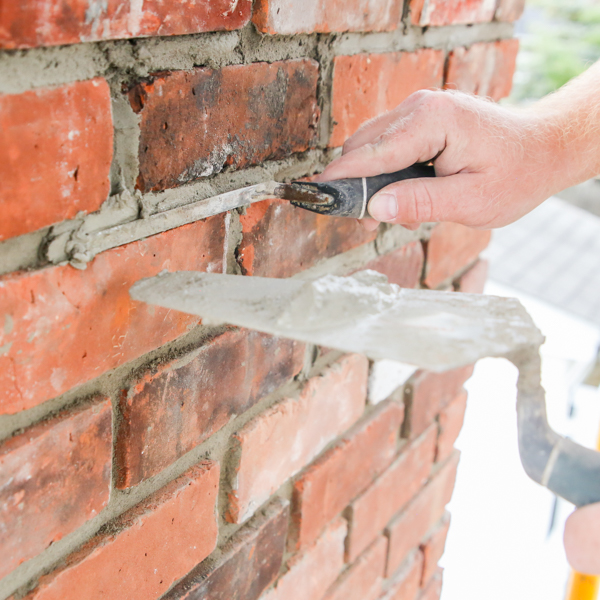Unlocking the Secrets of Sustainable Masonry Building And Construction Practices for Eco-Friendly Buildings
Among the myriad techniques to environment-friendly building, sustainable stonework building and construction stands out as a tried and true and resilient method that holds a riches of untapped potential. From the selection of products to innovative construction strategies, the tricks to accomplishing sustainability within masonry construction are complex and fascinating.
Benefits of Lasting Stonework Construction
Accepting lasting stonework construction practices not only minimizes ecological impact yet also provides lasting financial advantages to contractors and neighborhoods. By using products like recycled blocks, obstructs, and rocks, builders can substantially lower the carbon impact of their tasks while promoting resource effectiveness. In addition, lasting stonework building and construction techniques, such as proper insulation and thermal mass homes, can improve energy efficiency within buildings, leading to decreased operational costs over time.
Moreover, the sturdiness and resilience of stonework frameworks add to long-lasting economic benefits. Structures built using lasting stonework methods commonly need less maintenance and repair, converting to set you back savings for building contractors and homeowner. The longevity of masonry products additionally ensures that structures stay secure and secure, reducing the demand for regular restorations or replacements.
Eco-Friendly Stonework Products
Making use of green masonry materials is a crucial step towards improving the sustainability of construction methods and reducing environmental effect while making best use of long-lasting economic advantages. Lasting masonry products are sourced, created, and made use of in a way that reduces total environmental effect. Products such as recycled bricks, recovered rock, and sustainable cinder block are becoming progressively popular options for eco-conscious home builders. Recycled bricks, as an example, not just divert waste from land fills but likewise require less power to produce compared to brand-new blocks. Recovered rock provides an one-of-a-kind aesthetic allure while reducing the need for brand-new quarrying. Lasting concrete blocks integrate recycled accumulations and might feature enhanced insulation residential properties, contributing to energy effectiveness in structures.
In addition, all-natural products like adobe, rammed earth, and straw bales supply exceptional thermal mass buildings, lowering the demand for home heating and cooling down energy. These materials are usually in your area readily available, advertising regional economic climates and decreasing transportation-related carbon emissions. By selecting eco-friendly stonework products, building and construction tasks can dramatically minimize their ecological footprint and add to the production of much pop over to this web-site healthier, much more sustainable built settings.
Energy-Efficient Stonework Methods
Energy efficiency plays a vital role in improving the sustainability of stonework building practices. One essential energy-efficient masonry strategy is the use of thermal mass, which includes incorporating dense products like concrete or brick right into the structure's framework to soak up and store heat.

Innovations in Lasting Stonework
Current improvements in sustainable masonry practices have actually produced cutting-edge strategies that are improving the building and construction sector. One such advancement is the advancement of self-healing concrete, which utilizes bacteria embedded within the concrete to recover fractures autonomously. This advancement not just minimizes maintenance costs yet additionally improves the toughness of masonry frameworks, adding to their sustainability.
One more notable technology is the usage of recycled aggregates in stonework building - masonry contractor. By incorporating products such as crushed ceramic waste or recycled glass right into concrete mixes, home builders can decrease the ecological effect of construction projects while keeping architectural integrity. This technique not only draws away waste from garbage dumps yet likewise conserves all-natural resources, making it a vital improvement in lasting masonry building
Additionally, the assimilation of digital layout tools, such as Structure Information Modeling (BIM), is reinventing the way masonry frameworks are intended and constructed. BIM enables even more accurate estimations, decreased product wastefulness, and improved power performance, inevitably resulting in even more lasting building methods. These innovations collectively symbolize a promising future for sustainable stonework building in the period of environment-friendly structures.
Future Trends in Masonry Sustainability
With the ingenious strides made in official site lasting stonework techniques, the future trends in masonry sustainability are poised to more transform the building sector. Among the key trends shaping the future of stonework sustainability is the raised integration of technology. Improvements such as Structure Details Modeling (BIM) and digital truth simulations are being used to enhance masonry building procedures, bring about decreased material waste and enhanced energy performance in buildings.
Additionally, the advancement of novel sustainable materials is readied to play a considerable function in enhancing the eco-friendliness of masonry construction. masonry contractor. Developments like self-healing concrete, recycled aggregates, and bio-based binders are gaining grip for their capacity to decrease ecological effect while preserving structural integrity

Conclusion
Finally, lasting stonework construction techniques provide countless benefits for green buildings. By making use of environment-friendly materials and energy-efficient methods, stonework can contribute to a much more lasting built setting. Developments in lasting stonework are continuously being developed to better enhance the ecological efficiency of buildings. Looking in the direction of the future, the fad of masonry sustainability is expected to expand, leading to more ecologically pleasant and energy-efficient construction methods in the years to come.